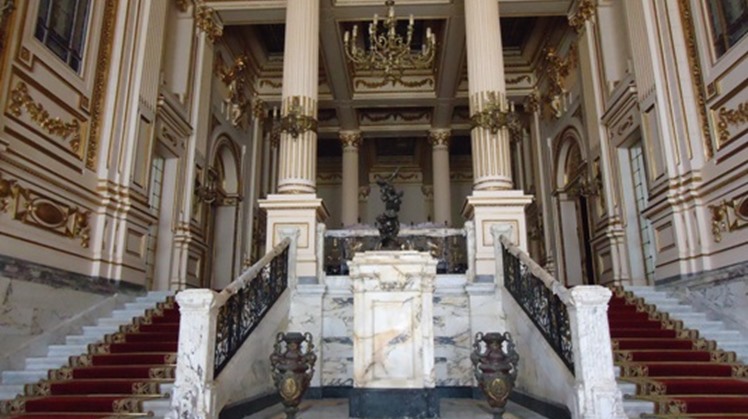Ras El-Tin Palace, one of the most important archaeological sites located in the city of Alexandria. This palace was built in 1834 AD during the reign of Muhammad Ali and hired foreign engineers, including the French engineer Cerezy Bey, to build the palace. It took eleven years to build the palace and it was officially opened in 1847 AD.
The palace was built in the European style, which was common in the city of Alexandria at the time, as it was in the form of a fortress that was built in the place of fig trees. Therefore, it was called Ras Al-Tin Palace. There was nothing left of the old palace except the door with its entrance, which was incorporated into the construction of the new palace, which was rebuilt by King Fouad in a style in line with the spirit of Modern era by the Italian engineer Ferrucci and became similar to Abdeen Palace.
The palace has several entrances, the most important of which is the entrance number 1, as it is a remnant of the old palace and is known as the eastern door. This entrance consists of six granite columns topped with capitals bearing a copper lintel with Quranic verses. opposite each other, according to the Ministry of Tourism and Antiquities.
As for the second entrance, it is a secondary entrance adjacent to the newly built mosque. There is a third entrance to the palace buildings from the sea side, and there is another fourth gate located at the end of the palace wall and leads to the naval command.
The palace contains several buildings located within the vicinity of the wall surrounding it, and these buildings are represented in the palace building, which includes the main and middle floors, the hospitality suite, the media suite, the princesses building, the glass corridors that connect the palace to the princesses building, and the mosque facing the main facade of the palace, which is a modern mosque. The railway station, the marina on the back facade, and there are two modern buildings, the Al-Barqi Mosque, and the “Presidency” building. The palace has a number of distinctive halls.
As for the extensions of the palace, it is the princesses’ building consisting of a ground floor and two upper floors, the train station rest building and the Al-Barqi Mosque. Its simple components express the fact that it is a corner, as its entrance is modern with a Qur’anic text from the two pilgrims and according to a text found on a piece of red cloth on which the text is executed in white. This is the shrine of my master, the Knower of God al-Barqi, in the year 1314 AH.
 Thu, Apr. 28, 2022
Thu, Apr. 28, 2022